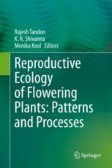Search
Search Results
-
Designing Dioscorea Genomes for Improved Nutritional and Pharmaceutical Properties
Dioscorea species, commonly known as “Yams,” belong to family Dioscoreaceae consisting of about 600 species distributed from Africa, Asia, the...
-
Ethnobotany of Food Plants Used in the Kimvula Territory (Kongo Central Province) in Congo, DR [Ethnobotany of Foods Plants in Congo, DR]
The present study is carried out with the aim to inventory the food plants used in the territory of Kimvula. Taxonomic analysis of food plants...

-
Herbaceous Versus Arborescent Habit in the Families and Orders of Flowering Plants—Evolutionary Trends
There many families and orders where arborescent traits are basal while herbaceous traits are derived. But the reverse situation is quite rare. To...
-
Genome sequencing of turmeric provides evolutionary insights into its medicinal properties
Curcuma longa , or turmeric, is traditionally known for its immense medicinal properties and has diverse therapeutic applications. However, the...

-
Asymmetric expansions of FT and TFL1 lineages characterize differential evolution of the EuPEBP family in the major angiosperm lineages
BackgroundIn flowering plants, precise timing of the floral transition is crucial to maximize chances of reproductive success, and as such, this...

-
Mycorrhizal structures in mycoheterotrophic Thismia spp. (Thismiaceae): functional and evolutionary interpretations
Achlorophyllous, mycoheterotrophic plants often have an elaborate mycorrhizal colonization pattern, allowing a sustained benefit from external fungal...

-
The first complete chloroplast genome of Vicatia thibetica de Boiss.: genome features, comparative analysis, and phylogenetic relationships
Vicatia thibetica de Boiss.: a herb in the family Apiaceae, has been used for over a hundred years as an essential medicinal and edible plant in the...

-
Plastid phylogenomic insights into relationships of all flowering plant families
BackgroundFlowering plants (angiosperms) are dominant components of global terrestrial ecosystems, but phylogenetic relationships at the familial...

-
Yams and Aroid Crop Waste: Bio Valorization into Bioproducts and Platform Chemicals
With the increase in the production of good products, there is an increase in crop wastes and byproducts that either end up in landfills or lead to...
-
Diversity of Gall-Inducing Cecidomyiid in Japan
First, each gall sort is defined based on gall structure and host plant information. Then, the number of sorts of gall was compared between different...
-
Dioscoreaceae
A diagnostic description of the family is given with special emphasis on the occurrence of succulence. This is followed by information on the ordinal...
-
Breeding for Abiotic Stress Resistance in Yam (Dioscorea Spp.) Using Biotechnology Approaches: Present Practices and Prospects
Yam (Dioscorea spp.) is an important crop providing food, income and medicine in tropics and subtropics. Major yam species in West Africa such as D....
-
Endosperm Development Traits in a Comparative Analysis of Endospermogenesis and Embryogenesis in Angiosperms
AbstractThe article discusses the fertilization process, the nucleus position in the primary cell, specifics of early endosperm development, and the...

-
Biotechnology Approaches in Breeding for Biotic Stress Resistance in Yam (Dioscorea spp.)
Yam (Dioscorea spp.) is a major staple and cash crop in tropical and subtropical regions. However, biotic (fungus, viruses, tuber rots, nematodes,...
-
Fossil evidence of core monocots in the Early Cretaceous
All the major clades of angiosperms have a fossil record that extends back to more than 100 million years ago (Early Cretaceous), mostly in agreement...

-
Targeted enrichment of novel chloroplast-based probes reveals a large-scale phylogeny of 412 bamboos
BackgroundThe subfamily Bambusoideae belongs to the grass family Poaceae and has significant roles in culture, economy, and ecology. However, the...

-
Ionomic variation in leaves of 819 plant species growing in the botanical garden of Hokkaido University, Japan
Ionomics is the measurement of total metal, metalloid, and nonmetal accumulation in living organisms. Plant ionomics has been applied to various...

-
A Snapshot of Evolutionary History of Floral Nectaries Across Angiosperm Lineages
Floral nectary (FN) represents an integral component of plant-pollinator interaction and thus its contribution to the evolutionary divergence of...
-
A monograph of the African and Madagascan species of Cyperus sect. Incurvi (Cyperaceae)
Cyperus sect. Incurvi (Cyperaceae) contains 31 species worldwide, with important continental radiations in Australasia, Tropical Africa and...

-
Cataloging the Presence of Endogenous Viruses
Forty three viral families are known to have forged endogenous relationships with eukaryotes. There also are 11 grou**s of viruses for which...
